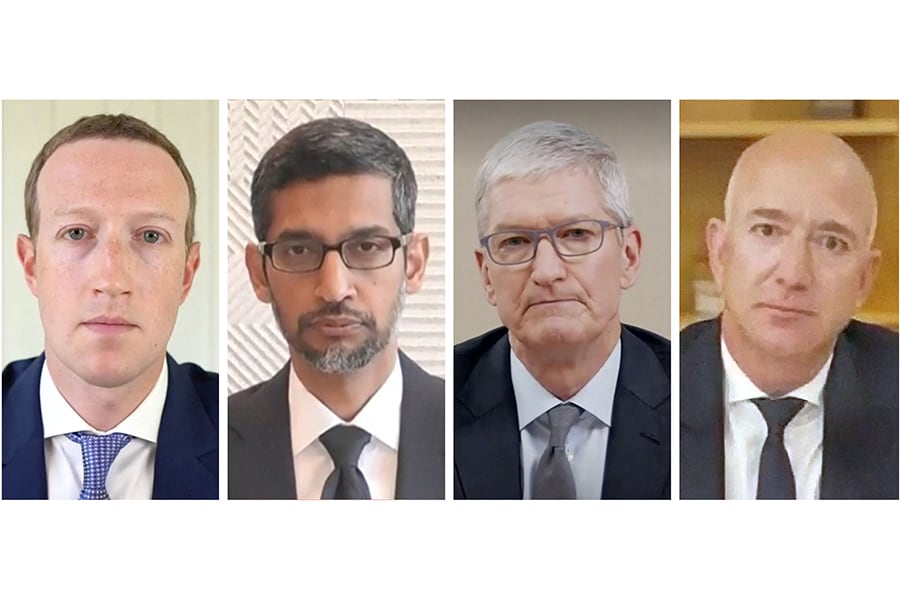
Titans of Tech testify in their trust-me suits
Jeff Bezos, Sundar Pichai, Mark Zuckerberg and Tim Cook looked more like four guys dressed up in their first graduation suits when testifying to Congress—serious, sincere, a little uncomfortable. Which was the point, of course
(Critic’s Notebook)
They didn’t look like titans. They didn’t look like masters of the universe. They didn’t look like “emperors of the online economy,” as Rep. David Cicilline, D-R.I., chairman of the antitrust subcommittee of the House Judiciary Committee, called them. Nor did they look like “cyber barons,” as Rep. Jamie Raskin, D-Md., said.
“They” — the four chief executives of Big Tech: Jeff Bezos of Amazon; Mark Zuckerberg of Facebook; Tim Cook of Apple; and Sundar Pichai of Alphabet, the parent company of Google, all witnesses in a congressional hearing on their market dominance — didn’t even look all that big.
In fact, beamed in from their offices on the West Coast because of concerns about the coronavirus, facing down the mask-clad members of Congress who were socially distanced from one another on the wood-paneled stage of the hearing room in the Rayburn House Office Building, the four men looked more like four guys dressed up in their first graduation suits — serious, sincere, a little uncomfortable — than the four horsemen of the digital apocalypse whose planetary power was a threat to one and all.
Which was the point, of course. Bezos and Co. were wearing costumes donned with purpose. They knew they were going to be looked at and judged, not just by the men and women in the room, but also by the viewing public. The hearing had been billed as potentially as significant as the Big Tobacco hearings that changed the cigarette industry. There was a lot at stake.
And though the whole idea of having to testify via video rather than in person seemed at first to be a disadvantage, it may have worked in their favor, serving to shrink their presence to human size and allowing them all sorts of opportunities for scene setting and character building.
©2019 New York Times News Service
 In an undated handout image, from left, Facebook CEO Mark Zuckerberg, CEO Sundar Pichai of Google’s parent company Alphabet, Apple CEO Tim Cook and Amazon CEO Jeff Bezos are seen via videoconference at a hearing of the House Judiciary subcommittee on antitrust, July 29, 2020. The four men appeared before Congress and dressed the part.
In an undated handout image, from left, Facebook CEO Mark Zuckerberg, CEO Sundar Pichai of Google’s parent company Alphabet, Apple CEO Tim Cook and Amazon CEO Jeff Bezos are seen via videoconference at a hearing of the House Judiciary subcommittee on antitrust, July 29, 2020. The four men appeared before Congress and dressed the part.



